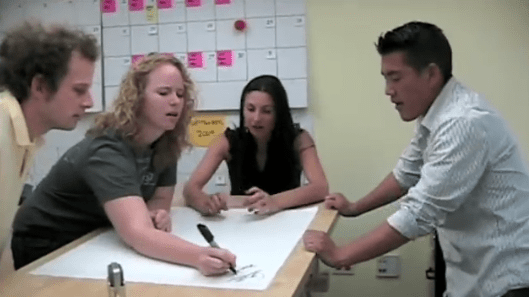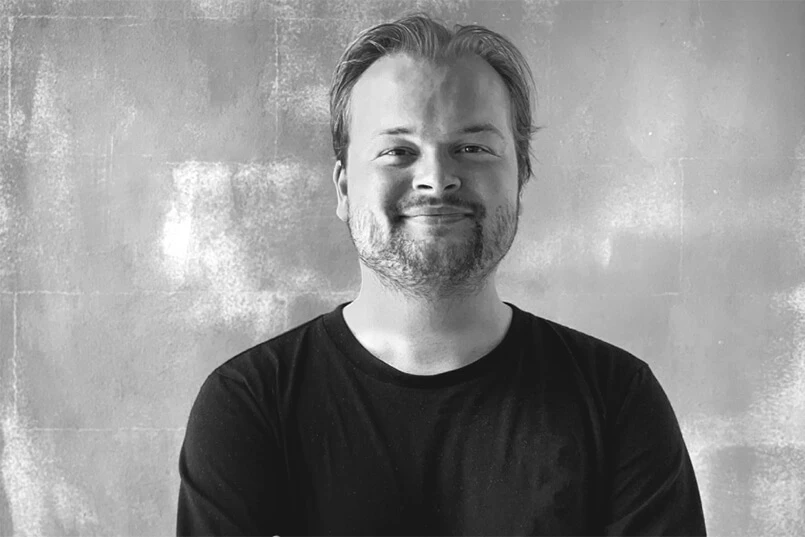Brainstorming is used as a collaborative tool for generating ideas. And many of us have been involved in brainstorming workshops either as part of strategy development or concept development. But there is evidence that the brainstorming process is flawed when it comes to actually creating innovative ideas.
Research from Allsorts Habit Creation, who make creative thinking a habit, have looked at the brainstorming process (as opposed to the blame-storming process made famous by Donald Trump’s The Apprentice”) and have come to the conclusion it does not deliver the results expected.
In fact they have identified the 12 most common causes of brainstorming not living up to its reputation including:
1. Thinking locked into predictable path
It’s all about habits. We get into a habit of doing things in a particular way, and without realising it, these habits can limit thinking and behavior. Brainstorming sessions are run in the same way, in the same location, by the same people, with the same attendees, all thinking the same way.
Solution: Change the way you run the sessions, where you run them, who attends, and who supervises them. Encourage different ways to approach a problem….not the same way as always.
2. Impact of negativity
If people go into a brainstorming session thinking it’s going to be a waste of time, or that they don’t have creative thinking skills, or that their ideas will be knocked back, then that attitude will have a huge impact on the outcome.
Solution: Ensure that you foster a positive approach before, during and after the idea generation session. Playing the devil’s advocate, saying it was tried before, saying it won’t get through management, and any other negative input, will stifle not just creative thought, but the desire to come up with truly creative options.
3. Ideas discarded too soon
Evaluating ideas before they have been fully developed is a sure way to kill off any great innovation. The initial idea may be illegal, immoral, impractical, or ridiculous. But playing with the idea may lead to a great solution. If it is cut out and not even recorded when it is first raised, there is no hope of it leading to an innovative solution.
Solution: Do not evaluate ideas as you go. That should be the final stage of the idea process. Record all ideas. Play with them to see which other ideas they lead you to.
4. Lack of enthusiasm
When participants attend a brainstorming session because they “have to”, or are too busy to give it their full attention, have no interest in the problem being addressed, or “know” it’s going to be a waste of time, then poor results are guaranteed.
Solution: Make these sessions fun. Don’t try to squeeze them into a busy day…plan a time and a place that will enable people to relax. You need to be enthusiastic about having the session and the anticipated results… and make sure that’s contagious.
5. Settling for first idea
It is easy to latch onto the first idea that seems feasible, work on it until it’s practical, and then say you’ve come up with an answer. The problem is that there may have been far better answers developed if the idea generation process had continued longer.
Solution: Leave the evaluation process until much later when there are more ideas to evaluate. Usually the best ideas are in fact not the first few that are considered. Push yourself.
6. Facilitator’s lack of skills
Facilitating a brainstorming session is not just asking the group for ideas. A facilitator must be skilled in creating the right atmosphere, maintaining a positive and exciting environment, eliciting the ideas from the group, encouraging the development of ideas, not allowing participants’ biases to influence the session, ensuring no one dominates the session, plus many more tasks.
Solution: Use a trained facilitator. And definitely not someone who will influence the group. All too often the facilitator is the departmental head. That usually is not a sensible choice.
7. Ideas not strategic
Many people get carried away when challenged to “think differently” and generate ideas that may be creatively brilliant and extremely innovative. However, they may not be strategically sound. It is important for brainstorming sessions to address both creative and strategic needs.
Solution: Go back to the brief and make sure that your idea is addressing the objectives. Sometimes the best ideas are not the most innovative; sometimes they are.
8. Not enough group diversity
Usually the group is made up of people from the same area or department, who have been working together for a long period of time, and have come to share the same way of thinking. They become “thought clones” of one another.
Solution: Get people involved from different areas of the organisation, or even outside the organisation. Some people who deal with the problem on a daily basis and some who have never encountered it. This will encourage a diversity in thinking.
9. The dominator
So often in a group there are one or two people who dominate. They have the loudest voices, think they have the best ideas, and dominate “air space.” This can result in everyone else just shutting down and not contributing. And all too often the dominator is the department head, who is also sometimes the facilitator.
Solution: The facilitator must have the skills to be able to control these people. And if the dominator is you…..you know what to do!
10. Sealed lips
A number of people are too scared to voice their opinion for fear of ridicule, being “wrong”, or lacking confidence. Or they may not want to speak until their superior has. Or perhaps not want to disagree with someone more senior in their group. They have an idea, but won’t share it.
Solution: Create an environment to entice these people to speak. Usually they will feel more comfortable in a smaller rather than larger group. A group in which their immediate superior is not part of. And give them positive feedback when they do make a contribution.
11. Don’t know how to think outside the square
It’s easy to say “think outside the square”, “push the envelope”, and “think outside the dots”. But most people have not been taught how to. Somehow we are all supposed to have these abilities. In reality, that is not the case. For some people thinking differently – creatively – comes naturally. For the bulk of the population, it is a skill that needs to be learned.
Solution: Give the people the skills to be able to think differently. Don’t just assume that they know how to. Like everything else, a new way of thinking can be learned. There are numerous tools that can be used to aid in the process.
12. Encourages harmony not debate
There should be two parts to brainstorming: idea generation and evaluation. In most cases a great deal of time is spent on the first and very little on the latter. And for a great number, the evaluation process is a very quick rubber stamp of a favourite idea. Harmony in the first stage…coming up with ideas… is essential. Encourage, don’t dismiss crazy ideas. However rigorous debate is crucial in the evaluation process. It is not the time to “go with the flow.”
Solution: Ensure that there are two very distinct parts to the brainstorming sessions. Encourage debate…not aggressive argument…but different points of view being put forward in the evaluation phase. At this stage don’t just accept an idea without challenging it.
I am sure we have all seen brainstorming sessions that fail to perform. My personal experience is that even the best brainstorming session is better at getting alignment of the participating stakeholders than it is at actually creating innovation.
But innovation is a more complex process than simply getting together and throwing some ideas around. One of my favourite books on the topic is the relatively small, but insightful “A technique for producing ideas” by adman James Webb Young.
Where have you seen brainstorming work well? And where has it failed? Let me know by leaving a comment.





5 thoughts on “12 reasons why brainstorming does not work”
While I get the point of this article, you are not truly referring to the original concept of brain storm as outlined by Alex Osborn. The issue is that virtually no one has read his books — 1942 How to Think Up! or 1953 Applied Imagination.
Brainstorming was not about blindly generating ideas for the sake of going so….it was about solving the problems of his advertising clients. I read the books……most of the issues raised in this article were covered. I think Osborn actually conceived the term brain storming rather than popularizing it.
In 1953 Alex Osborne published ‘Applied Imagination.’ He wrote 287 pages to help you apply your imagination in more structured ways. He suggests we have two types of imagination:
•Our creative mind visualizes, foresees and generates ideas.
•Our judicial mind analyzes, compares and chooses.
If you can’t solve a problem by applying your imagination, he added 20 more pages to help you engage other people to solve the problem by… “…using the brains to storm a creative problem – and do so in commando fashion, with each stormer audaciously attacking the same objective!”
Yes Ed, you are right. The article is based on the research of Allsorts Habit Creation who were researching how Brainstorming is being applied and practiced rather then the the original concept of Alex Osborne.
There is certainly nothing incorrect with a structured approach to thinking and in fact there are a large number of books and articles published on this topic. The point of the post was to highlight the short coming of the process as it is commonly practiced and to make people aware that collaboration is not just putting people in a room and hoping to get an outcome. Much like the idea of a thousand monkeys in a room with typewriter eventually writing Shakespeare.
One of my favourite books on creating ideas is by AdMan James Webb Young. A little book called "A technique for producing ideas" which I have reviewed and written about previously.
The effectiveness of any brainstorming session is directly tied to the facilitator’s ability to properly lead the people — and the session. Effective leadership normally translates to an effective outcome in virtually any group setting, hence the criticality of strong leadership in both professional and personal settings.
Brainstorming is not bad per se. Brainstorming is mostly badly done. That's all
Any process badly executed will fail. And I think what you see here is the ways that the purpose of the process has been circumvented by continual poor execution to the point that brainstorming itself has a bad rap. I think everyone has been involved in sessions like this where the solution is pre-determined and the process is simply run to get alignment. But likewise, when well executed, the collective thinking and diversity of experiences and thoughts can create new opportunities and innovative ideas. I think the former is becoming more prevalent than the latter. Hopefully discussion like this will encourage people to question the purpose and process.
Comments are closed.